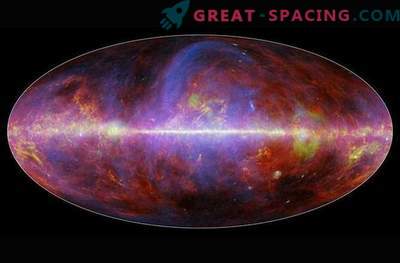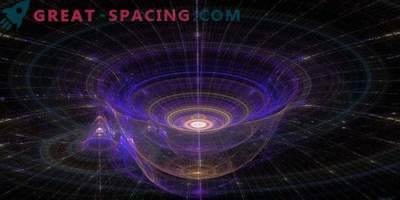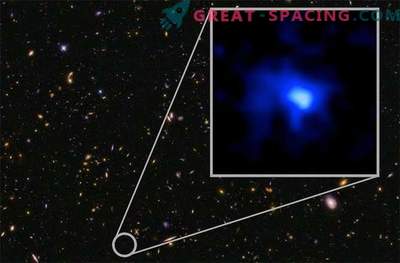
NGC4993 is a galaxy that receives the gravitational wave event GW170817, used to determine the universe age. The source is a red dot.
Over the past 2 years, scientists have managed to capture gravitational waves from 5 sources, which confirms the model of gravity and space-time created by Einstein. Modeling these events also provided information on massive stellar birth, gamma-ray bursts, neutron stars and (for the first time) helped to test theoretical ideas about the production of very heavy elements, such as gold.
Scientists decided to use the gravitational wave event GW170817 to measure the age of the Universe. In the detection of gravitational waves contributed 1314 scientists of the planet. It was they who managed to capture the signals from a pair of binary neutron stars with the subsequent detection of gamma rays and a cataclysm in the galaxy NGC4993. Knowing the distance and speed of the galaxy from us, we can calculate the time from the beginning of the expansion - the age of the Universe: 11.9-15.7 billion years (taking into account experimental uncertainties). The resulting age is consistent with estimates derived from decades of observations based on statistical methods, as well as the analysis of relic radiation and the movement of galaxies. The first relies on the display of a very weak light distribution, dating back 400,000 years after the Big Bang. The second takes into account the statistical analysis of distances and movements of tens of thousands of galaxies in relatively recent times.
Of course, one event cannot determine the exact age. Therefore, with a large statistical sample it will be possible to narrow the numbers. However, the new age is intriguing. Although measurements of relic radiation and galaxies seem accurate, they do not agree at a level of 10%. Perhaps the whole thing is a simple mistake. But there is a suspicion that relic radiation may arise from a completely different epoch of cosmic time, as shown by the information of the galaxy.











































